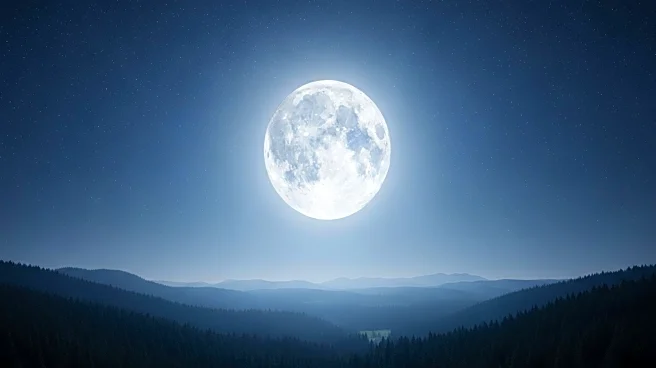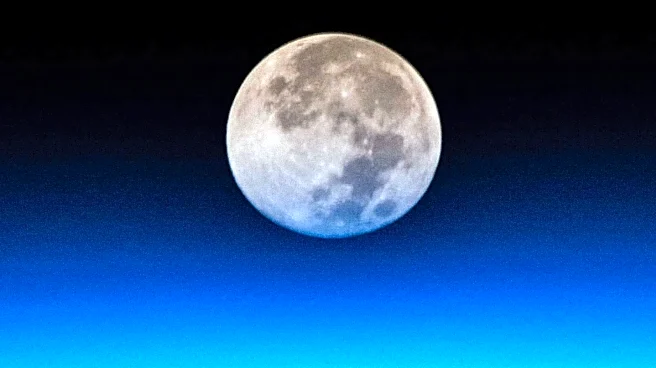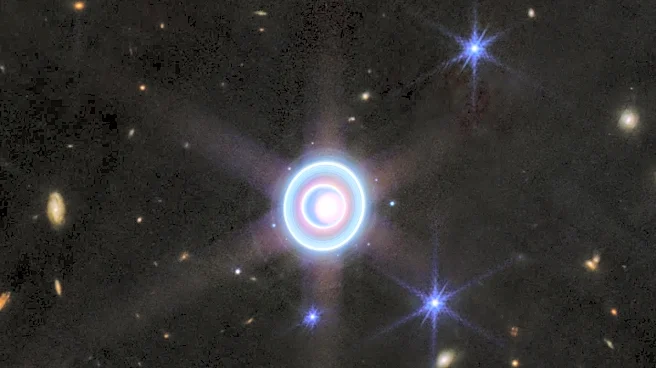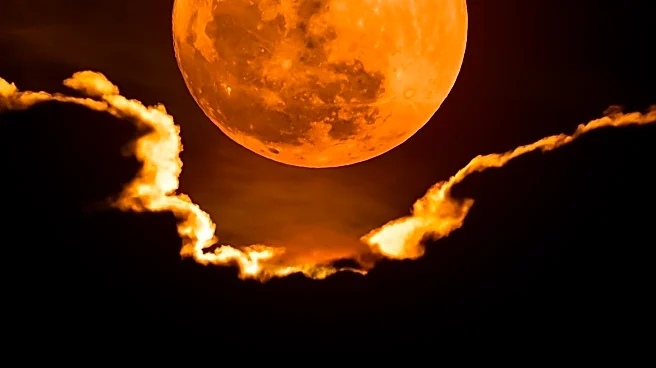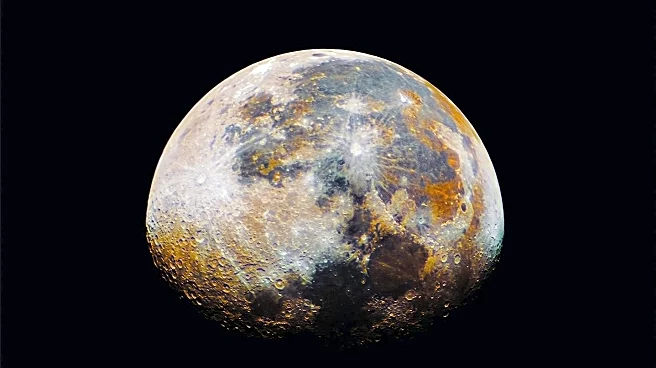What is the story about?
What's Happening?
The Harvest Moon, the first supermoon of 2025, is set to rise on October 6, appearing larger and brighter due to its proximity to the autumn equinox. This celestial event will peak at 11:47 p.m. EDT, shining brightly in the constellation of Pisces with Saturn nearby. Historically, the Harvest Moon provided extra light for farmers in the Northern Hemisphere to harvest crops. This supermoon coincides with the moon's closest approach to Earth in its orbit, making it appear subtly larger and brighter than usual. Stargazers are encouraged to use telescopes or binoculars to appreciate its majestic features, including the bright streaks of ejecta rays from impact craters.
Why It's Important?
The Harvest Moon's occurrence as a supermoon offers a unique opportunity for skywatchers and astronomers to observe the moon's features more clearly. This event is significant for cultural and historical reasons, as it has traditionally aided farmers during harvest time. The increased brightness and size of the moon can enhance public interest in astronomy and provide educational opportunities for schools and science enthusiasts. Additionally, the event encourages community gatherings and moon-viewing parties, fostering social interaction and appreciation for natural phenomena.
What's Next?
Following the Harvest Moon, skywatchers can anticipate two more supermoons before the year's end, including the Beaver Moon in November and the Cold Moon in December. These events will continue to offer opportunities for observation and photography. The National Weather Service predicts clear skies for most of the U.S., providing optimal viewing conditions. As the moon continues its cycle, enthusiasts are encouraged to observe its changes over time, enhancing their understanding of lunar phases and celestial dynamics.
Beyond the Headlines
The Harvest Moon's cultural significance extends beyond its astronomical features. It represents a time of harvest and preparation for winter, reflecting agricultural traditions and seasonal changes. The event also highlights the importance of preserving dark skies for astronomical observation, as light pollution can hinder the ability to view celestial events. Efforts to reduce light pollution can benefit both the environment and the scientific community, promoting sustainable practices and enhancing the quality of life.
AI Generated Content
Do you find this article useful?


